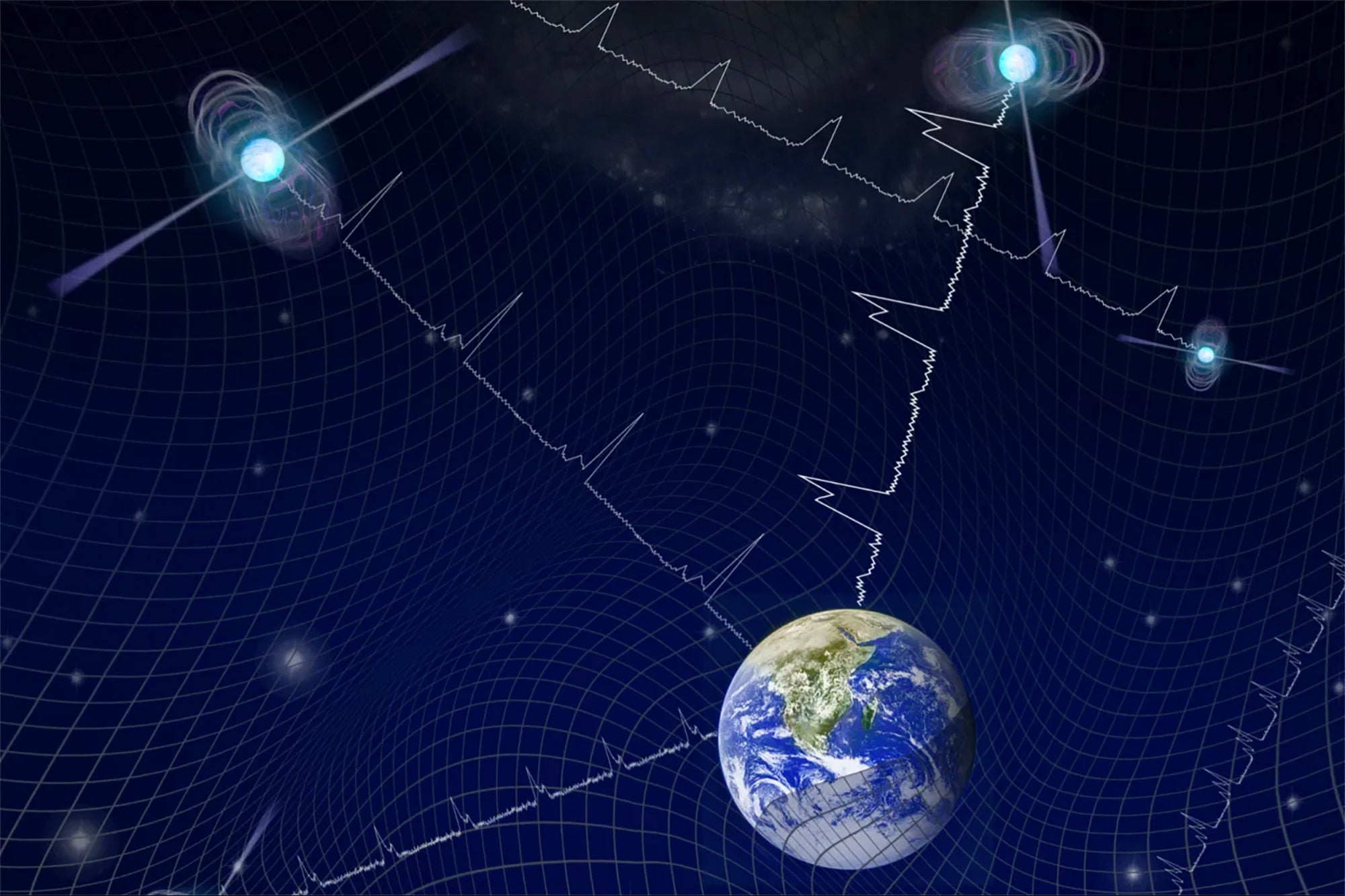Scientists May Have Found the Background Ripples of the Universe The gravitational wave discovery could help us understand the cosmos.
By Jon Fingas Edited by Frances Dodds
This story originally appeared on Engadget

Scientists may have identified the gravitational waves that make up some of the universe's background, not just those coming from unusual events like black hole collisions. New Atlas reports that the NANOGrav research team has discovered a "strong signal" that might represent the gravitational wave background — that is, the waves from supermassive black hole mergers across the cosmos.
Rather than try to detect the waves directly, NANOGrav has been looking for the effects of those waves on pulsars, whose light patterns are mostly consistent over long periods. The researchers looked at as many pulsars as possible (45 so far) for as long as possible (at least three years) and noticed a common process that appeared to skew the collective timing by hundreds of nanoseconds.
This isn't a definitive result. Scientists will want to verify the data with more pulsars and longer studies, and that could take years. If this does represent background gravitational waves, though, it could help pinpoint the sources of those waves and, ultimately, just how these "hidden' forces shape the universe.









